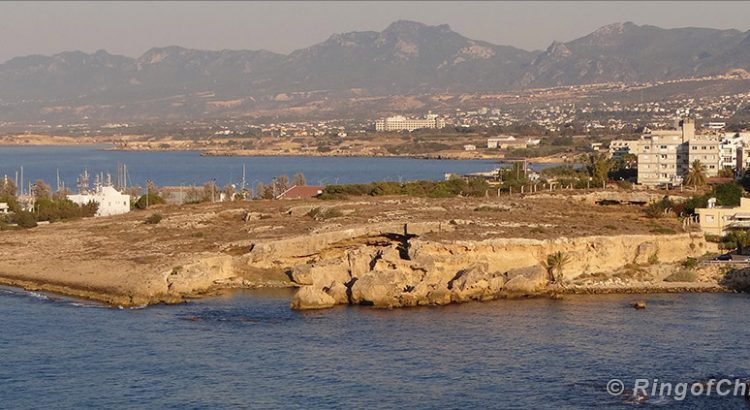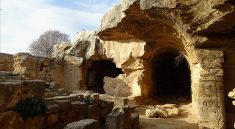Cave Church of Kyrenia drawn in the late 19th Century

The catacombs are located just east of the Kyrenia Fort and small bay. The treeless cliff area is easily located from the eastern ramparts of the fort, and must be viewed from this point since there is no access into the area today.
Two thousand years ago Romans quarried stone from the area, and during the Late Roman Period early Christians carved tombs into the rocky promontory. Cisterns, too, were carved into the rock to catch rainwater for the workers, later to be used as baptismal fonts with stairs cut down to them.
According to William Dreghorn’s eyewitness account in the late 1800’s, early Christians sculptured a small Byzantine church with an interior altar into the cliff walls close to the beach. He also describes a Medieval Chapel close by.
Chrysokava means Cave of Gold. Dreghorn says that the area was given this name because so much gold jewelry and other items have been found from looted tombs.



Dreghorn was convinced by the varied types of carved structures and the many Christian symbols that Christian presence could date to before 900AD. He noticed “much evidence of habitation and other small shrines, including one which led down to an ancient well.”
A Guide to the Antiquities of Kyrenia by William Dreghorn , B.Sc., Ph. D. (Lond.)



